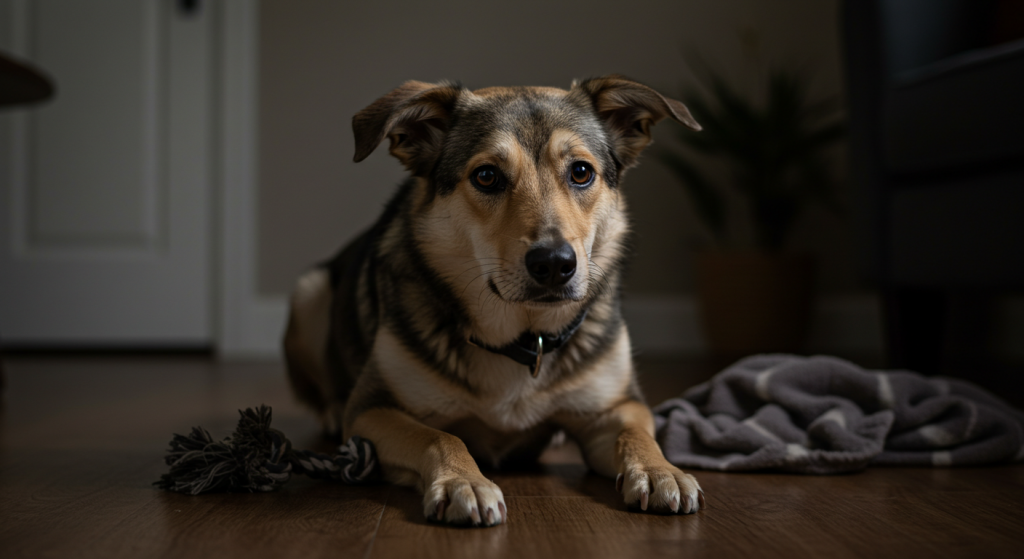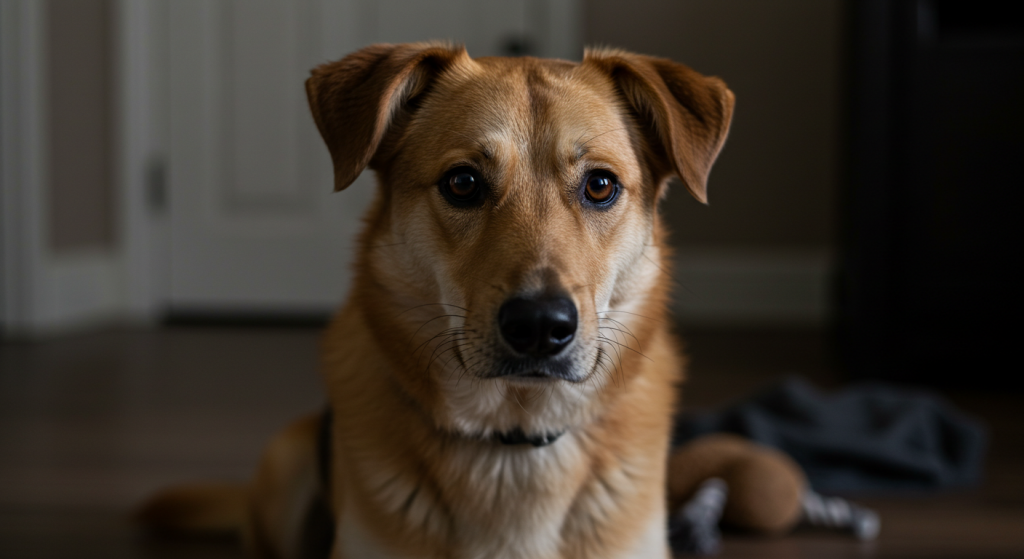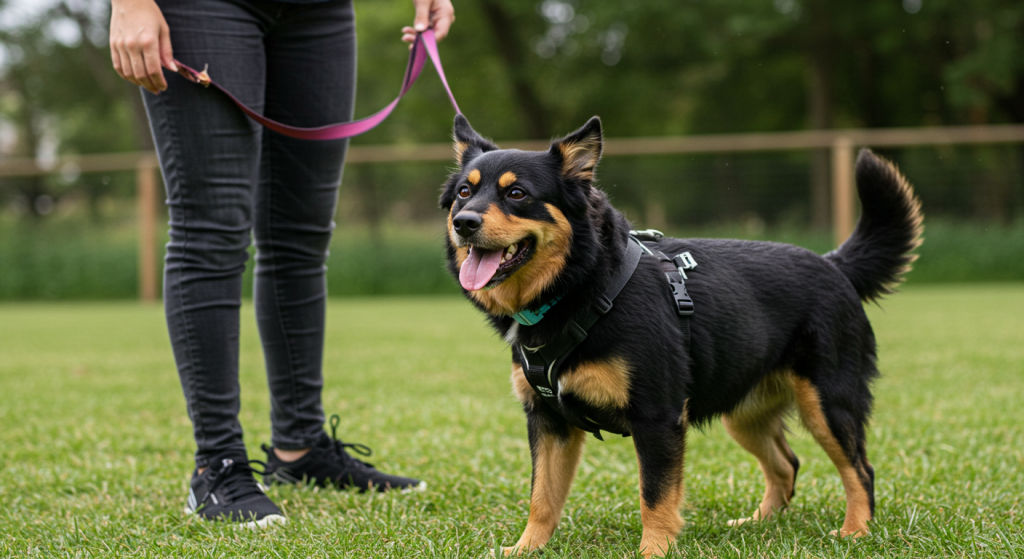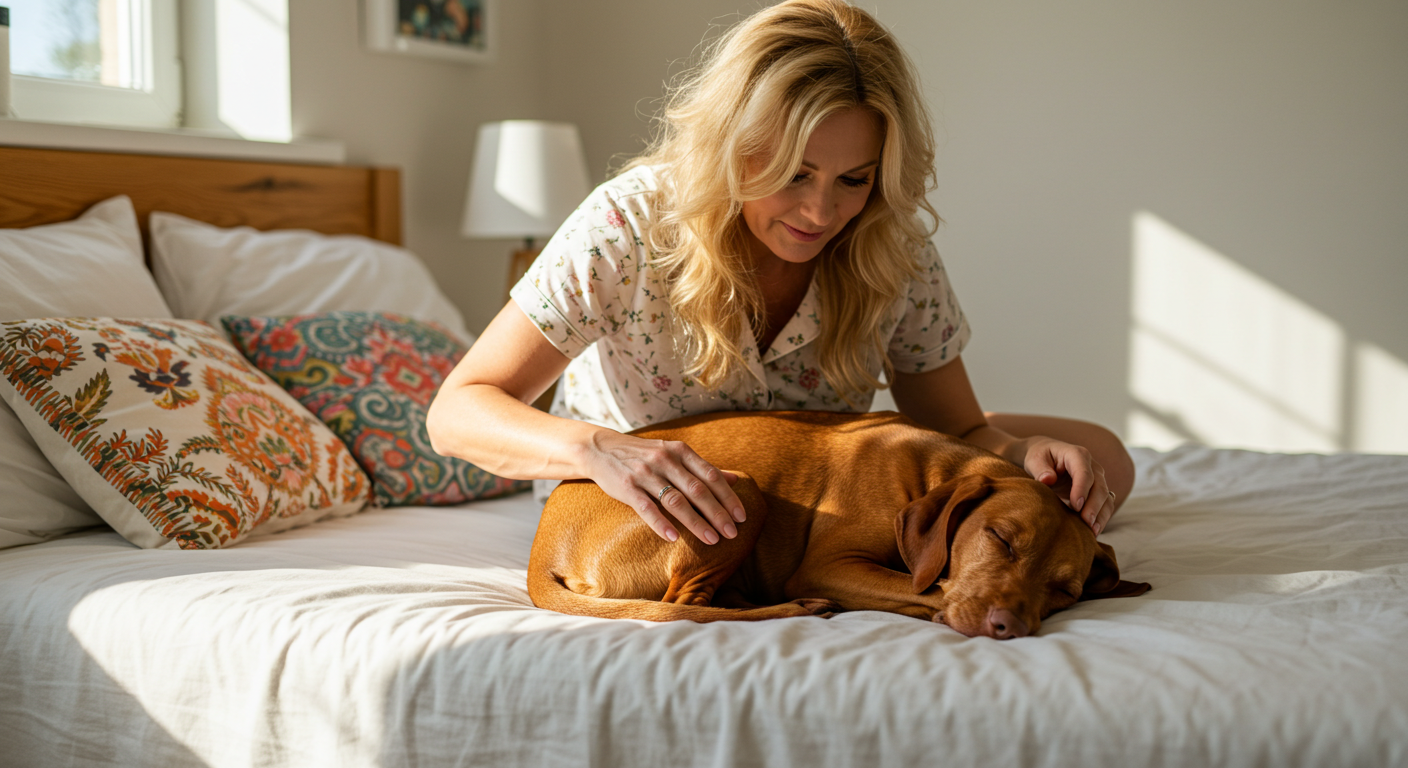Does your dog howl, chew, or pace the minute you grab your keys?
You’re not alone. Studies suggest 1 in 4 dogs shows separation‑related behaviors (SRBs) before their first birthday. PMC Left unchecked, chronic stress can raise heart rate, suppress immunity, and land beloved pets in shelters.
What We'll Cover
- Understand the Roots of Canine Separation Anxiety
- 12 Proven Tips for Help a Dog With Separation Anxiety
- 1. Tire Body and Brain Before You Leave
- 2. Start “Door‑Handle” Desensitization
- 3. Pair Departures With High‑Value “Only‑When‑I‑Leave” Treats
- 4. Create a Safe‑Zone Den
- 5. Add Background Noise
- 6. Use Pheromone Diffusers
- 7. Keep Exits and Returns Low‑Key
- 8. Rotate Interactive Toys
- 9. Hire Help on Long Workdays
- 10. Teach a Relaxation Mat Cue
- 11. Consider Medication or Supplements
- 12. Call in a Certified Professional
- Effectiveness & Cost at a Glance
- FAQs
- Putting It All Together: A 4‑Week Starter Plan
- Conclusion
This guide gathers 12 science‑backed tips for help a dog with separation anxiety. You’ll learn why it happens, what really works, and how to build a calmer routine—without feeling guilty every time you leave the house.
Understand the Roots of Canine Separation Anxiety

| Fast Facts | Number |
|---|---|
| Dogs prescribed anti‑anxiety meds (U.K., 2024) | 1 in 500 |
| Puppies showing SRBs at 6 months | 24 % |
| Average alone‑time tolerated without stress | 4 hours |
Why it happens
- Genetics—working breeds bred to stay close to humans are over‑represented. PubMed
- Early weaning, re‑homing, or pandemic upbringings can reduce resilience.
- Sudden routine changes (new job, move, baby) trigger relapse even in adult dogs.
Common signs
Destructive chewing, vocalizing, self‑injury, house‑soiling, or escape attempts within 30 minutes of departure. If behaviors occur when you’re home, rule out boredom or medical pain first.
12 Proven Tips for Help a Dog With Separation Anxiety

1. Tire Body and Brain Before You Leave
A brisk 30‑minute walk or game of fetch lowers cortisol and promotes post‑exercise sleep. ASPCA
2. Start “Door‑Handle” Desensitization
Pick up your keys, walk to the door, sit back down. Repeat until your dog stops reacting. Gradually add small absences—10 seconds, 1 minute, 5 minutes.
3. Pair Departures With High‑Value “Only‑When‑I‑Leave” Treats
Kongs stuffed with frozen peanut butter or puzzle feeders shift the emotional state from fear to food. Over time, the door closing predicts a party, not panic.
4. Create a Safe‑Zone Den
A covered crate or gated laundry room, paired with comfy bedding and a worn T‑shirt, mimics the calming pressure of a den. Never use confinement as punishment.
5. Add Background Noise
Classical music or “dog TV” masks outdoor triggers and has been shown to slow breathing rates in shelter dogs.
6. Use Pheromone Diffusers
Dog‑appeasing pheromones (DAP) reduced destructive behavior by up to 85 % in clinical trials. AVMA Journals
7. Keep Exits and Returns Low‑Key
Ignore your dog for the first two minutes after you come home; wait for calm before greeting. This teaches that comings and goings are no big deal.
8. Rotate Interactive Toys
Snuffle mats, wobble feeders, and automatic rolling balls keep minds busy and prevent the “I’m bored and anxious” spiral.
9. Hire Help on Long Workdays
A mid‑day dog walker or half‑day dog‑day‑care break prevents the alone‑time threshold from being exceeded.
10. Teach a Relaxation Mat Cue
Reward your dog for settling on a mat while you move around the house. Once solid, move the mat near the door, then outside.
11. Consider Medication or Supplements
For severe cases, vets may prescribe fluoxetine or clomipramine alongside behavior work. Medication use jumped ten‑fold over the last decade, but experts stress it should support—not replace—training. Latest news & breaking headlines
12. Call in a Certified Professional
Certified Applied Animal Behaviorists (CAAB) or Veterinary Behaviorists craft tailored desensitization plans and rule out medical causes.
Effectiveness & Cost at a Glance
| Intervention | Success Rate | Approx. Monthly Cost | Best For |
|---|---|---|---|
| Desensitization plan | 60–80 % | Time investment | Mild–moderate |
| High‑value food puzzles | 40–60 % | $20–$40 | Puppies, food‑motivated dogs |
| DAP diffuser | 50–85 % | $30 | Dogs sensitive to scent cues |
| Daily dog walker | 70 % | $300–$600 | Owners with 8‑hr shifts |
| Behavior meds | 65–75 % | $40–$90 + vet visits | Severe, self‑injurious cases |
FAQs

How long does it take to cure separation anxiety in dogs?
Most dogs need 3–6 months of consistent training; some require a year. Early intervention speeds success.
Is crate training good or bad for separation anxiety?
A crate can help if introduced gradually and associated with positive experiences, but forced confinement often worsens panic.
Can I adopt another dog to solve the problem?
A second dog rarely fixes true separation anxiety, which centers on people absence, not canine company.
Are certain breeds more prone?
Yes—Border Collies, German Shepherds, and Vizslas appear in SRB studies more than average.
Putting It All Together: A 4‑Week Starter Plan

| Week | Primary Goal | Daily Action |
|---|---|---|
| 1 | Build calm departures | 5 sets of key‑pickups + treat, 2 × 10‑min walks |
| 2 | Extend alone time to 5 min | Graduated absences, introduce Kong at door close |
| 3 | Add safe‑zone training | Feed all meals in crate or gated room |
| 4 | Maintain & monitor | Randomize exit cues, schedule walker twice |
Track progress in a spreadsheet or app; note barking duration, destruction, and recovery time after you return.
Conclusion
Your dog isn’t being “naughty”—they’re scared. By combining exercise, gradual training, mental enrichment, and, when needed, professional help, you can replace fear with confidence.
Next step: Pick two tips above and start today—maybe a freezer‑stuffed Kong and a three‑minute practice departure. Small, steady wins will give you and your best friend the freedom to enjoy stress‑free good‑byes and even happier reunions.
The responses below are not provided, commissioned, reviewed, approved, or otherwise endorsed by any financial entity or advertiser. It is not the advertiser’s responsibility to ensure all posts and/or questions are answered.








